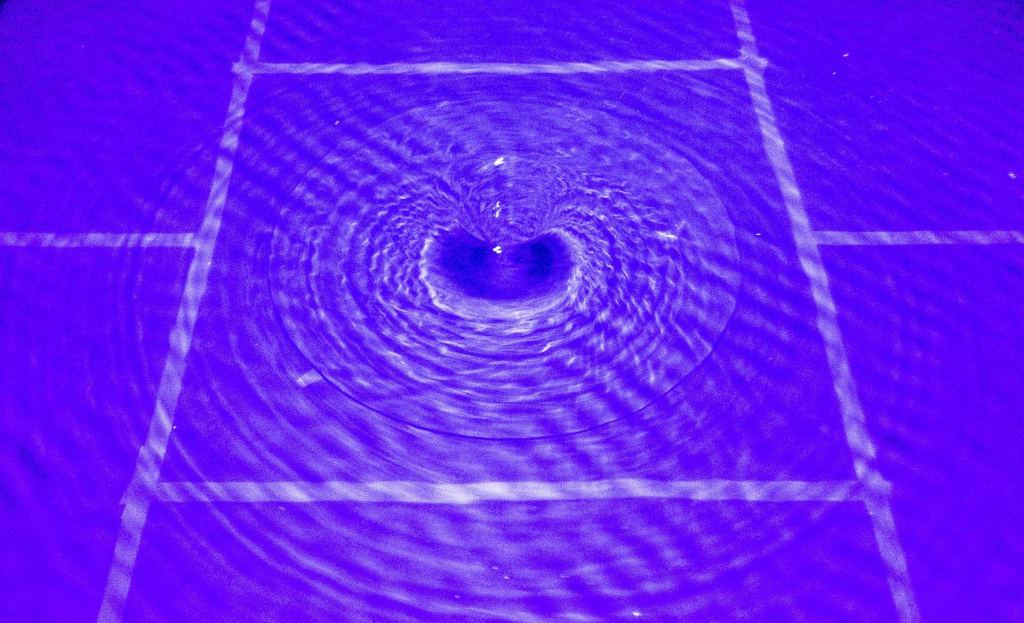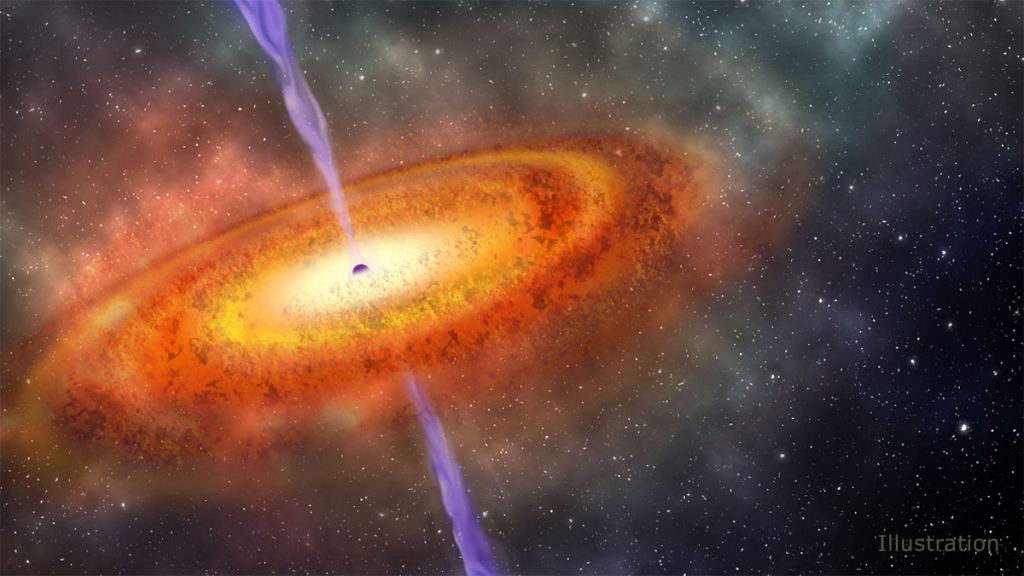Black Holes Simulated in a Tank of Water Reveals “Backreaction” for the First Time
By Brian Koberlein
It’s hard to make a black hole in the lab. You have to gather up a bunch of mass, squeeze it until it gravitationally collapses on itself, work, work, work. It’s so hard to do that we’ve never done it. We can, however, make a simulated black hole using a tank of water, and it can tell us interesting things about how black holes work.
Water simulations of black holes are possible because the mathematics that describes the behavior of water is similar to the mathematics that describes the behavior of things like gravitational waves. Gravitational interactions occur in fluid-like ways, so you can use a fluid to study them. There are limitations to these water models, however, so you need to be careful when studying water simulations.
One problem with water models of black holes is that you need to drive the simulation to keep it going. Suppose you want to study how matter might be captured by a black hole. You can simulate the black hole by a vortex of water, similar to the tornado-like swirl you sometimes see when draining a bathtub. To keep the vortex going, you have to power your system so that the pattern stays stable long enough for you to get good data.
Because of this, it was generally thought that water models couldn’t exhibit an effect that should occur with real black holes, known as backreaction. Backreaction occurs when there is an interaction where an object reacts back with its environment. For example, as a black hole captures matter its mass increases. This increase in mass changes how the black hole warps space around it, thus changing the surrounding space slightly. Backreaction is an important phenomenon, but it is subtle and difficult to study.

Recently, however, a team has found that backreaction can be seen in water simulation models. The research studied how a background of gravitational waves could interact with a rotating black hole. In their water model, they created a water vortex simulating a black hole and then generated a ripple of waves toward the vortex. The reaction between the vortex and ripples caused the vortex to grow more quickly than it ordinarily would. In this way, gravitational waves could accelerate the growth of a black hole through a backreaction effect.
In the water simulation, the backreaction was strong enough the team would visibly see the water level of their tank drop when it occurred, proving that the reaction can occur on short time scales.
While this study is interesting on its own, the work also shows that backreaction must be taken into account with many water simulations. Usually, it has been assumed that water vortex simulations can assume a stationary background, meaning any backreaction can be ignored in the model. This work shows how that assumption might not work when studying other black hole effects such as Hawking radiation.
It will be a while before real black holes can be made in the lab. Fortunately, water simulations such as this one still have plenty to teach us.
Reference: Goodhew, Harry, et al. “Backreaction in an analogue black hole experiment.” Physical Review Letters 126.4 (2021): 041105
The post Black Holes Simulated in a Tank of Water Reveals “Backreaction” for the First Time appeared first on Universe Today.

February 3, 2021 at 10:07PM
via Universe Today read more...

Post a Comment